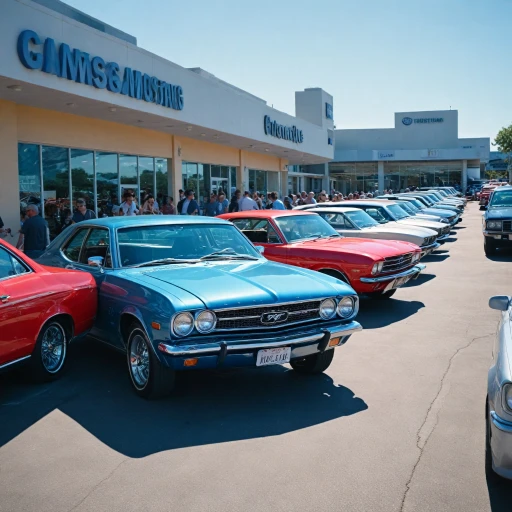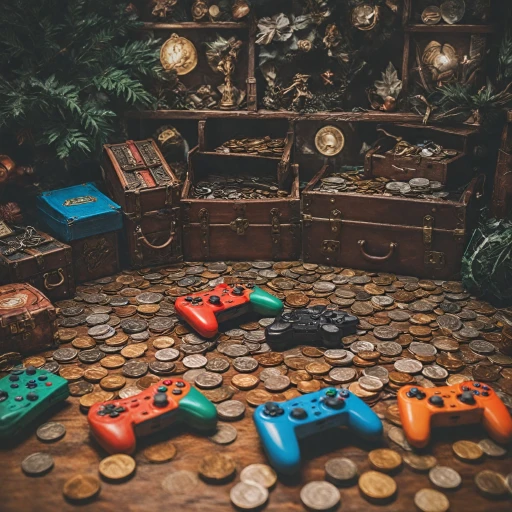
Understanding the Concept of Lost Origin
The Mystique of Lost Origin
Diving into the world of Lost Origin in the realm of Pokémon TCG, we find ourselves amidst a captivating blend of nostalgia and novelty. A part of the ongoing Sword & Shield series, Lost Origin brings unique elements, intriguing cards, and a host of features aimed to captivate collectors and players alike. Notably, it introduces a diverse range of cards, spanning from common to ultra rare, engaging enthusiasts and strategists who seek rare holo, reverse holo, or secret rare cards.
The art and design of these Pokémon cards, like the intricate full art or captivating trainer gallery pieces, play a significant role in their appeal. These elements resonate with fans of iconic creatures such as Giratina, Hisuian Zoroark, and Aerodactyl VSTAR, each bringing their own charm and value to the collection. It's a world where card rarity defines not just the price, but the thrill of possession. From reverse foils to the elusive vmax and vstar cards, each holds a place in the hearts of its collectors.
The Complexity of Pricing Structures
Understanding the concept of Lost Origin extends beyond just the physical presence of the card. Pricing this collection can be a blend of subjective and objective assessment, often influenced by its rarity, art, and the state of the market. The perceptions of value can often pivot on trends, popularity of specific pokémon, and sometimes even the card's condition.
Importantly, strategic navigation can help enthusiasts and traders capitalize on their investments, recognizing opportunities that might not be immediately apparent without a deep dive into the complexity of this lost origin. For more insights into saving and strategic purchases in similar collector markets, you can explore how to unlock savings effectively.
Factors Influencing Lost Origin Prices
Key Determinants of Pricing in Lost Origin
In the fascinating world of Pokémon TCG, Lost Origin prices are shaped by a myriad of factors. Understanding these can be crucial for both buyers and sellers aiming to navigate this intriguing market effectively. The rarity of a Pokémon card plays a pivotal role in dictating its price. Categories such as common, uncommon, and rare dictate how easily a card can be acquired. For instance, a secret rare Giratina card typically commands a higher price compared to a common card due to its scarcity and desirability among collectors. Card condition is another critical factor. Cards in mint condition retain more value than those with visible wear and tear. This is especially true for holo rare or ultra rare cards, where imperfections can significantly detract from their worth. Artistic elements, such as full art and reverse holo, also enhance a card’s appeal and influence pricing. Collectors often seek out these visually captivating cards, making them more valuable in comparison to standard prints. Cards like the Hisuian Zoroark or Aerodactyl VSTAR with unique artwork can fetch impressive prices. Additionally, the popularity of specific Pokémon within a set can sway market prices. Galarian Perrserker and Hisuian Goodra from the Sword and Shield Lost Origin expansion are in demand due to their strategic utility in competitions and their appeal to fans. Lastly, the presence of special sets within the Pokémon TCG, such as the Trainer Gallery, contributes to the pricing dynamics. Cards from these sets often boast unique features, making them highly coveted among enthusiasts. With these elements in mind, interested buyers should arm themselves with knowledge while exploring the market. It's advisable to leverage Gamerthors exclusive coupons for potential savings in this competitive collecting landscape.Challenges in Pricing Lost Origin Items
Understanding Market Complexities in Determining Worth
Pricing Lost Origin items is no simple task, largely due to the myriad of factors at play. The unique attributes of Lost Origin cards such as card rarity and the appeal of special versions like the holo rare, full art, and ultra rare contribute significantly to valuation. However, there are additional challenges stemming from the diverse nature of these cards.
- Card Rarity and Demand: The classification of cards into categories such as common, uncommon, and rare influences their market value. Cards like giratina and hisuian zoroark, especially if they're of the ultra rare or secret rare variant, are typically in higher demand.
- Edition and Set Features: The Sword & Shield expansion has introduced several desirable traits. Reverse foil and reverse holo are in demand, not only for their distinctive appearance but also for their scarcity in the Lost Origin packs. This rarity can drive the price up significantly.
- Artwork and Collectibility: Full art cards and those part of the trainer gallery are particularly prized among collectors. The visual appeal of these cards, combined with their limited availability, can amplify their worth.
- Condition and Grading: As with most collectibles, the condition of a card plays a critical role. Cards in pristine condition can fetch higher prices than those with visible wear.
Beyond these tangible qualities, fluctuating trends in the Pokemon trading card game (TCG) scene and the overall popularity of the Sword Shield Lost Origin set can also shift market dynamics. Navigating these complexities and understanding the determining factors require a strategic approach to capitalize on opportunities. Exploring various aspects of these challenges can provide valuable direction in seeing how entities unlock new savings opportunities through market insights.
Strategies for Buyers: Navigating the Lost Origin Market
Exploring Effective Strategies in the Lost Origin Market
Navigating the Lost Origin market can be a complex experience for both new and experienced buyers alike. With its launch in the Pokémon Trading Card Game, figures like the Hisuian Zoroark and Giratina have made their mark in the vivid tapestry of Lost Origin cards. Understanding the landscape involves strategic planning and a keen eye for card rarity and value.
To make informed purchasing decisions, consider the following strategies:
- Research Card Rarity and Popularity: Recognizing the different tiers of rarity such as holo rare, ultra rare, and secret rare can significantly influence your decision-making process. Cards like Hisuian Goodra and Aerodactyl VSTAR are in high demand, and staying updated with market trends helps tailor your purchases effectively.
- Pay Attention to Art Variations: Variations like full art and reverse holo can greatly impact a card’s value and appeal. Reverse foils and sword shield cards often hold higher collectible value, so it's worthwhile to refer to these categories when considering additions to your collection.
- Monitor Market Prices: Prices can fluctuate rapidly due to factors like newfound popularity or the availability of reverse and common rarities. Leveraging resources that track current market values can provide you an edge when inserting a new Pokémon TCG card into your portfolio.
- Participate in Community Discussions: Engaging with fellow enthusiasts through forums and social media groups can uncover trends and unforeseen value in cards, such as those from the trainer gallery. Community insights often reveal hidden gems amidst seemingly common card appearances.
Understanding how to navigate the intricate dance of purchasing in the Lost Origin market can be daunting, but with thorough homework and strategic actions, you can enrich your collection. Whether looking for a rare holo like Galarian Perrserker or a shield lost card, informed choices will assist in maximizing your investments over time.
Seller Insights: Maximizing Value in the Lost Origin Market
Boosting Seller Value in the Lost Origin Arena
For sellers eager to extract maximum value from their Lost Origin collections, understanding the intricate web of influences on prices and mastering effective strategies is crucial. The Lost Origin market, with its rich tapestry of card varieties ranging from holo and reverse holo rares to full art and ultra rares, presents both challenges and opportunities for sellers. To excel in this market, sellers should consider the following approaches:- Keep an Eye on Card Rarity: Recognize the significance of card rarity levels. Cards such as the Giratina VStar or the striking Hisuian Zoroark can command higher prices due to their desirability among collectors and players.
- Stay Informed on Market Trends: Be aware of shifting consumer preferences and the factors influencing Lost Origin prices. Cards like Aerodactyl VStar or Hisuian Goodra from the Sword & Shield series may see fluctuating demand. Staying informed requires monitoring market platforms and communities where these changes are discussed.
- Condition and Presentation: The condition of the Pokémon cards is paramount. Graded cards, especially those depicting popular figures like Galarian Perrserker in pristine condition, can significantly increase in value. Proper storage to prevent damage and professional grading can enhance the perceived worth.
- Engage with Collectors and Gamers: Building connections within the Pokémon TCG community can reveal potential buyers who value specific cards. Networking through forums, expos, and social media can lead to insightful exchanges and potential sales.
- Price Competitively: Competitive pricing does not mean underselling. Instead, it focuses on leveraging the unique aspects of your cards, such as their rarity or unique art designs, to justify higher price points while remaining fair and attractive to potential buyers.
Case Studies: Successful Deals Involving Lost Origin Items
Building Blocks of Success: Real-life Navigation Through Lost Origin Deals
When delving into the Lost Origin market, successful deals often rely on a blend of knowledge and strategy, as evidenced by various real-world scenarios. Notably, the aerodactyl vstar card, due to its intricate art and status as a secret rare, became highly sought after. The value of this card surged as collectors and players alike recognized its rarity and strategic gameplay benefits.
In another case, giratina vstar emerged as a pivotal component in gameplay within the pokemon tcg framework. Its utilization in decks that emphasized a balance between power and strategic depth contributed to its escalating price. This demand was accentuated by its trainer gallery presence, sparking interest from both casual collectors and competitive players.
Furthermore, the holo rare and reverse foil iterations of certain Lost Origin cards, such as the hisuian goodra and galarian perrserker, managed to command premium values. These iterations hold a special allure for their visual appeal and gameplay fluidity, doubling the interest from both an aesthetic standpoint and a tactical one.
The path to securing such deals is enhanced by understanding the nuances of card rarity. Softly approached negotiations allowed savvy buyers to secure cards like the hisuian zoroark without inflating the market, emphasizing the importance of timely engagement and market awareness.
Both buyers and sellers in the realm of Lost Origin must navigate the market with a keen eye for how the rarities of english pokemon variants, from reverse holo to ultra rare, play into their strategic advantage. These insights reinforce the dynamic nature of the Lost Origin marketplace, reminding stakeholders that both knowledge depth and strategic planning are key to unlocking successful deals.




